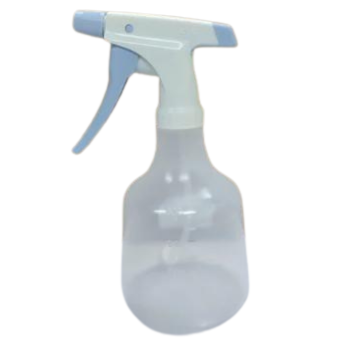Autoclavable Spray Bottles
Autoclavable Spray Bottles
Autoclavable spray bottles are indispensable assets in environments where sterility is paramount. These specialized containers are designed to withstand the extreme conditions of autoclaving, ensuring that their contents remain free from contamination. Let’s delve into why these bottles are vital and how they can be effectively utilized.

Products
Autoclavable Spray Bottles
Lahari Enterprises takes pride in offering autoclavable spray bottles that combine advanced features with superior quality, ensuring reliability and performance. Autoclavable spray bottles are specifically designed to withstand the high temperatures and pressures of autoclave sterilization processes, making them ideal for use in laboratory and medical settings where sterility is crucial.
PP (Polypropylene) : Chemical structural formula : [CH2-CH(CH3)]n
JCSCA* No, : (6)-402
CAS No, : 9003-07-0
Hazardous identification : Non/toxic , Non/hazardous
FRPP (Grass Fiber reinforced polyplopylene) : Chemical structural formula : (C2H4)m・(C3H6)n
FRPP (Grass Fiber reinforced polyplopylene) :Propene, polymer with ethene, syndiotactic, block (6)-10
Denatured polyplopylene general
Grass fiber not coverd
added substance general
CAS No : Propene, polymer with ethene, syndiotactic, block 9010-79-1
Grass fiber 65997-17-3
Hazardous identification: Non/toxic, Non/hazardous
PC : polycarbonate : It contained 40% of grass fiber to strengthened physical properties.
As based resin,it has not any cadmium,lead, hexavalent chrome and hydrargyrum.
Hazarodous identification : Non/toxic , Non/hazardous
PC (polycarbonate) : Ingredient : POLY(Vinylidene Fluoride-Co-Hexafluoropropylene) 96~98%
CAS No,: 9011-17
NBR :Name : Nitrile Butadiene Rubber
Chemical structural formula : -(-CH2-CH=CH-CH2-)m-(-CH2-CH)n-CN
JCSCA* No, : (6)-454
CAS No, : 9003-18-3
Hazarodous identification : Non/toxic , Non/hazardous

